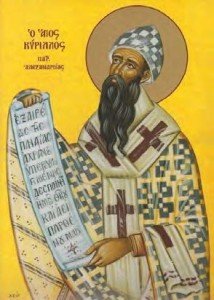In the last issue of this article I actually shared the text from the Council of Chalcedon which finalized an actual dogmatic statement about Who the Church believes Jesus Christ to be. On the Cyrillian side, particularly noteworthy is the repetition of the pronoun “the same” eight times (excluding the Nestorian “duality” between the Son of God and the son of Mary) and the use of the title Theotokos. On the Antiochene-Latin side is the insistence on the integrity of each nature, each keeping its respective properties within the union. The formula is clearly a “committee document,” lacking the straightforward, kerygmatic and soteriological fire of earlier Cyrillian statements. But it reflects a “catholic,” charitable – we would say today “ecumenical” – concern for possible objections from either side of the debate. (If you kept last week’s Bulletin, go back over the statement).
Can it be said that the Council of Chalcedon solved the Christological problem? Certainly not. Like all balanced, conceptual formulas, it solved certain problems but created new ones. Actually the Fathers of Chalcedon were conscious of this limited character of all doctrinal definitions, including their own. Not only did they deny any novelty on their part and insist that their only intention was to follow the fathers and the prophets and further clarify the statements that began at Nicaea. They also formally declared their inability to exhaust the meaning of the mystery in a verbal form. This is the significance of the famous four negative adverbs included in the definition: “without confusion, without change, without division, without separation.”
In spite of this declared humility of the Chalcedonian fathers, objections to their terminology were voice immediately. Indeed, on the one hand, by declaring that Christ was to be seen “in two natures,” they were using the word “nature” in a more abstract sense than Cyril did, for whom nature designated a concrete reality and was synonymous with hypostasis. On the other hand, by designating the union as a concurrence into one person, or hypostasis, they were not making it quite plain that this hypostasis was the preexisting hypostasis of the Son of God (although their Cyrillian expressions hinted in that direction). Finally, Chalcedonian theologians would always be at pains to try to explain how, according to the Cappadocian fathers, God was still one God, although in Him there were three Hypostases and one nature.

